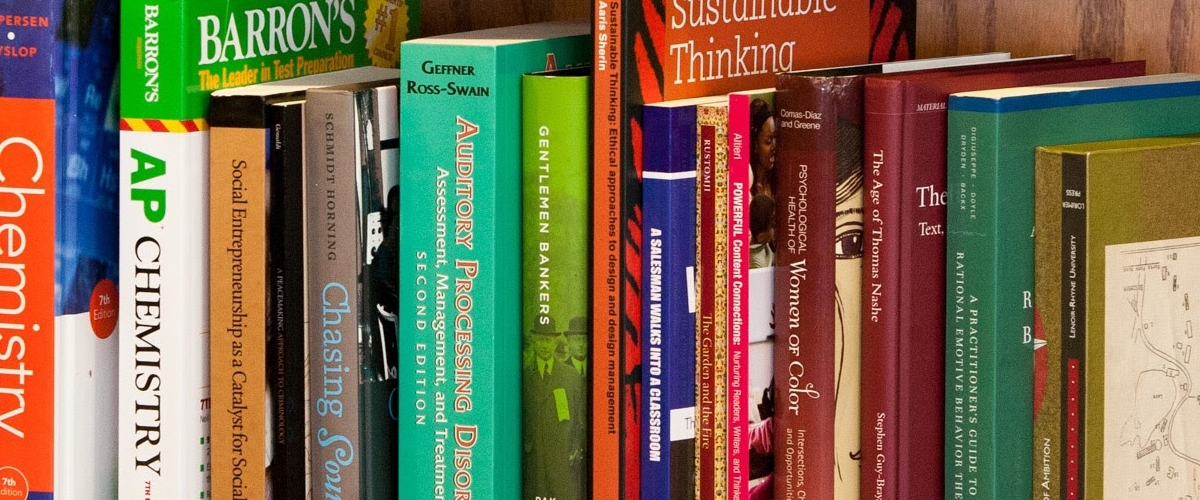

UG
Physical Science, Bachelor of Science
The Bachelor of Science (B.S.) in Physical Science at St. John's University is an interdisciplinary major that can provide training of physics, chemistry, biology, mathematics and engineering. It is a desirable path for pre-engineering, pre-medical and other health or engineering related professions. Physical science is often taken as a double major along with a
major in Biology.
- Home
- Academics
- Majors and Programs of Study
- Physical Science, Bachelor of Science
The Bachelor of Science (B.S.) in Physical Science at St. John's University is an interdisciplinary major that can provide training of physics, chemistry, biology, mathematics and engineering. It is a desirable path for pre-engineering, pre-medical and other health or engineering related professions. Physical science is often taken as a double major along with a
major in Biology.
The Physical Science program at St. John's University offers three interdisciplinary program tracks, offering students rigorous academic training in various fields in engineering and the sciences.
- The Mechatronics track will prepare students with courses focused on the electrical, mechanical and computer engineering as well as robotics.
- The Engineering Physics track will prepare students with engineering-oriented courses to pursue future careers in either civil, mechanical, electrical or chemical engineering.
- The Biophysics track will prepare students with biology, physics and chemistry courses for a future career in health or medicine related industry.
Each of these tracks will prepare students for graduate school, train students for positions in industry, and provide numerous career opportunities with strong technological qualifications. Through the Physical Science program at St. John's, students will gain the scientific, technological, analytical, and communication skills for future success.
- Degree Type
- BS
- Area of Interest
- Science & Mathematics
- Associated Colleges or Schools
- Program Location
- Queens Campus
- Required Credit Hours
- 120
Department Contact
Admission
For more information about admission to this and other acclaimed undergraduate programs at St. John’s University, please contact Undergraduate Admission.
Courses
To earn a Bachelor of Science (B.S.) degree in Physical Science, you complete 120 credits, including core, major, and elective requirements. The major requirements are outlined below. For more information about the courses listed below, please see the St. John’s College of Liberal Arts and Sciences section of our Undergraduate Bulletin.
| Course | Title | Credits |
|---|---|---|
| PHYS 1930 / 1610 | University Physics I / College Physics I | 4 |
| PHYS 1940 / 1620 | University Physics II / College Physics II | 4 |
| PHYS 1950 | Mathematics for Physical Science | 3 |
| PHYS 1970* | Introduction to Modern Physics | 3 |
| MTH 1730 | University Calculus I | 4 |
| MTH 1740 | University Calculus II | 4 |
You complete an additional 23 credits, chosen from among the following program tracks:
Mechatronics
| Course | Title | Credits |
|---|---|---|
| PHY 1100 | Introduction to AutoCAD | 3 |
| PHY 2000 | Introduction to Digital Systems | 4 |
| PHY 2100 | Introduction to Microprocessor | 4 |
| PHY 3000 | Introduction to Mechatronics | 3 |
| PHY 3510 | Electrical Systems | 3 |
| PHY 3240 | Electronics | 4 |
| PHY 3890 | Introduction to Programming | 3 |
*PHY1970 is not required for Mechatronics. It can be substituted for PHY 2110 Engineering Mechanics.
Engineering Physics
Mechanical/Civil Engineering
| Course | Title | Credits |
|---|---|---|
| PHY 2150 | Thermodynamics | 3 |
| PHY 2110 | Engineering Mechanics | 3 |
| PHY 3890 | Introduction to Programming | 3 |
| PHY 3820 | Fluid Mechanics | 3 |
| PHY 3210 | Electricity and Magnetism | 3 |
| PHY 3240 | Electronics | 4 |
| Any upper-level Physics course | ||
Electrical/Computer Engineering
| Course | Title | Credits |
|---|---|---|
| PHY 2000 | Introduction to Digital Systems | 4 |
| PHY 2100 | Introduction to Microprocessor | 4 |
| PHY 3510 | Electrical Systems | 3 |
| PHY 3520 | Networks | 3 |
| PHY 3240 | Electronics | 4 |
| PHY 3890 | Introduction to Programming | 3 |
| PHY 3210 | Electricity and Magnetism | 3 |
Biophysics
23 credits from Physics, Chemistry, and Biology
Career Outcomes
St. John’s University is widely known for the success of its alumni. Forbes.com lists the University among its top 15 institutions in terms of graduates’ earning power. And a recent survey by The Wall Street Journal ranks St. John’s among 100 Top colleges and universities that are “most likely to help students land a job in key careers . . . that are growing, pay well and offer high levels of job satisfaction.”
Additional Information
Students also may choose from a wide variety of student activities which are specific to the major as well as student clubs and organizations that enhance their academic studies, including the Math Club and the Sigma Pi Sigma honor society.
Other resources include high-tech classrooms, a 1.7 million-volume University Library, and facilities like the Staten Island Campus DaSilva Academic Center and Queens Campus D’Angelo Center.
You also enjoy the many cultural and professional benefits accruing from St. John’s New York location, including the faculty and Career Services's relationships with leading business and educational resources throughout the area.
You can further expand your educational and experiential horizons with a Global Education at St. John's.
Interested in Science & Mathematics, but not sure if Physical Science, Bachelor of Science is right for you?
Related Programs
UG
The Bachelor of Science in Biochemistry provides you with a comprehensive curriculum that prepares you for graduate school or a career in health, or the biotechnology, pharmaceutical, or cosmetic industries.
- Queens Campus
GR
The program gives students a thorough understanding of the scientific theory and advanced laboratory research techniques vital to success in pharmaceutical and biotechnology industries. Students also receive valuable internship experience in this revolutionary field.
- Queens Campus
UG
The Department of Biological Sciences is committed to the preparation of students for the exciting, rapid, and unpredictable changes in the field of biology that will continue to emerge over the next century.
- Queens Campus
UG
Biologists study living organisms and their relationship to the environment.
- Queens Campus
Dual
The Department of Biological Sciences offers an intensive, accelerated combined degree program leading to both the B.S. and M.S. degrees in five years of full-time study.
- Queens Campus
GR
The Ph.D. program in Biology at St. John’s delivers comprehensive knowledge of the biological sciences, with an emphasis on cell and molecular biology.
- Queens Campus
GR
The Master of Science (M.S.) program in Biology at St. John’s delivers comprehensive knowledge of biological sciences, with an emphasis on cell and molecular biology.
- Queens Campus
UG
St. John’s University admits selected academically talented high school seniors as biology majors and, simultaneously, to candidacy for admission to the professional Doctor of Optometry (O.D.) program at SUNY College of Optometry. Admission to this accelerated program may allow you to graduate with both B.S. and O.D. degrees in only seven years, rather than the usual eight.
- Queens Campus
UG
Podiatry is a profession dedicated to the complete care of the feet. Most Doctors of Podiatry, or podiatrists, treat many types of foot problems, but some specialize in foot surgery or other treatments for congenital defects, diseases and injuries of the bones and joints of the foot. A podiatrist can also specialize in podopediatrics (foot ailments of children) or in podogeriatrics (foot ailments of the elderly). Like other health professionals, podiatrists are responsible for referring patients to other practitioners (usually physicians) when foot problems are symptoms of other health disorders, such as diabetes and heart disease.
- Queens Campus
UG
The Bachelor of Science degree in Biomedical Sciences provides an interdisciplinary academic program of study that fosters competencies in areas related to biomedical sciences, health sciences, as well as core competencies in the liberal arts and sciences and prepares students for health professions and graduate programs.
- Queens Campus
UG
As a Chemistry major, you will graduate with a wide array of career possibilities in the chemical, environmental, health, and pharmaceutical industries.
- Queens Campus
UG
The Department of Chemistry offers an intensive, accelerated, combined degree program leading to both the Bachelor of Science (B.S.) and the Master of Science (M.S.) degrees in five years of full time study.
- Queens Campus
GR
The widely-respected Master of Science (M.S.) program in Chemistry at St. John’s will prepare you for a career in industry, education, government laboratories, or private research, or to pursue a doctoral degree in the field.
- Queens Campus
GR
The M.S. in Computational Biology and Biostatistics at St. John’s University answers a growing demand for data analysts, data curators, database developers, statisticians, mathematical modelers, bioinformaticians, and software developers with training in both computer science and biology.
- Queens Campus
UG
Explore minors for undergraduate students in Environmental Studies or Environmental Education from St. John's University.
- Queens Campus
GR
Sustainability is a growing field in both the public and private sectors. The Master of Arts in Environmental Sustainability and Decision Making at St. John’s will prepare you for opportunities in a rapidly evolving global community that spans the sciences, social sciences, and humanities.
- Queens Campus
UG
The interdisciplinary Bachelor of Arts (B.A.) in Environmental Sustainability and Decision-Making integrates coursework from across the sciences, humanities, and social sciences, among others to prepare you for opportunities in a rapidly evolving global community.
- Queens Campus
UG
Provides you with interdisciplinary knowledge and hands-on experience in criminal investigation, evidence analysis, and legal procedures to prepare for careers in forensic science, law enforcement, and related fields.
- Queens Campus
GR
Neuroscience is the branch of the sciences that studies the relationship between the anatomy, physiology, biochemistry, and molecular biology of nerves, nervous tissue, and diseases. Through the Master of Science (M.S.) in Neuroscience at St. John’s , you can prepare for a career in this growing interdisciplinary field.
- Queens Campus
UG
The combined Bachelor of Science (B.S.) and Master of Business Administration (M.B.A.) in Physics and Business Administration offers highly-motivated students the opportunity to complete both undergraduate and graduate degrees in five years of full-time study.
- Queens Campus
UG
The Department of Physics at St. John's University offers three Bachelor of Science (B.S.) degrees in Physics, Mathematical Physics, and Physical Science, as well as a minor in Physics.
- Queens Campus
UG
Physics is a very fundamental subject in all sciences. It is truly a “Theory of Everything”. It encompasses the various theoretical and applied studies from the origin of the universe to the formation of tiny particles that make up everything around us, to different interactions that govern our physical world, etc.
- Queens Campus

